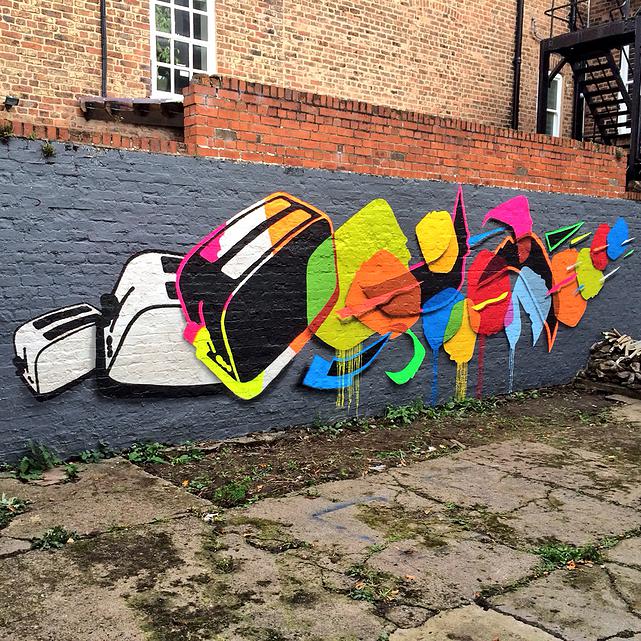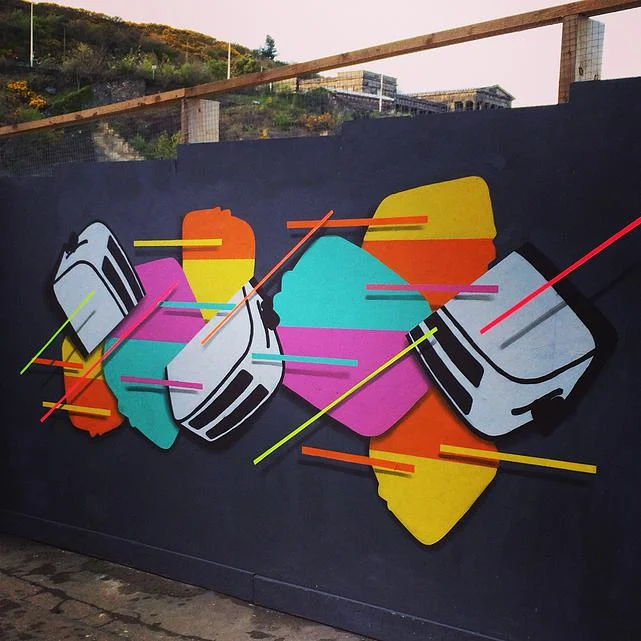Toaster
The original Toaster crew had three founding members: Toaster A, Toaster B & Toaster D. With such intriguing monikers and seemingly random choice of subject matter, their work was designed to invite questions. Why a toaster? What happened to Toaster C? Whatever the answers, their manifesto was simple: to populate the world with images of toasters. Toaster A now works alone and explains, “choosing such an essential and mundane domestic appliance for display in highly public spaces, reflected the graffiti-induced displacement we felt at house parties, always hanging out in the kitchen discussing graffiti." Wanting to steer away from a standard typographic acronym, Toaster wanted to create an internationally recognisable symbol, the aim being to see whether an anonymous, unexplained image could create its own narrative among a community of followers and if so, just how far the phenomenon could spread. Starting out as a viral sticker campaign, Toaster quickly migrated to walls and the rest is history. Given that Toaster is still one of the most readily identified artists working the streets, it’s safe to say the experiment was a success. As the Toaster image has travelled, it’s also evolved – in recent years, this iconic image has been deconstructed, silhouetted, abstracted and injected with limitless colour variations far beyond the original three way palette of orange, black and white. For the last 16 years, the toaster image has travelled the world via stickers, posters, stencils, banners, walls, billboards, museums, music festivals and sports stadia, reaching audiences in New York, San Francisco, Los Angeles, Eindhoven, Turin, Berlin, Barcelona, Buenos Aires, Sao Paolo, Montevideo, Bangkok, Tokyo, Shanghai, London and Wolverhampton (where the first ever Toaster sticker was planted). In 2012, Toaster’s image of the Olympic rings on the Village Underground Wall in Shoreditch, subtly designed using the toaster shape, became one of the most celebrated and enduring images of the London 2012 games.







